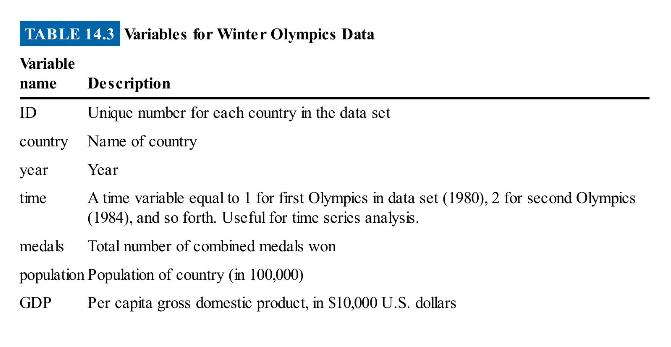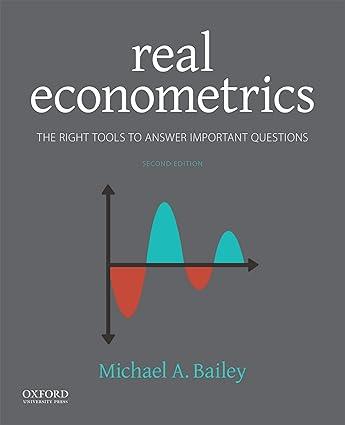Using the data in olympics_HW.dta on medals in the Winter Olympics from 1980 to 2014 to answer
Question:
Using the data in olympics_HW.dta on medals in the Winter Olympics from 1980 to 2014 to answer the following questions. Table 14.3 describes the variables.
(a) Run a model with medals as the dependent variable and population as the independent variable, and briefly interpret the results.
(b) The model given omits GDP (among other things). Use tools to anticipate the sign of omitted variable bias for \(\hat{\beta}_{1}\) in the results in part
(a) that are due to omission of GDP from that model.
(c) Estimate a model explaining medals with both population and GDP. Was your prediction about omitted variable bias correct?


(d) Note that we have also omitted a variable for whether a country is the host for the Winter Olympics. Sign the bias of the coefficient on population in part
(a) that is due to omission of the host country variable.
(e) Estimate a model explaining medals with both population and host (do not include GDP at this point). Was your prediction about omitted variable bias correct?
(f) Estimate a model explaining medals with population, GDP, host country, average elevation, and average temperature. Use standardized coefficients, and briefly discuss the results.
(g) Use tips in the Computing Corner to create a new GDP variable called NoisyGDP that is equal to the actual GDP plus a standard normally distributed random variable. Think of this as a measure of GDP that has been corrupted by a measurement error. (Of course, the actual GDP variable itself is almost certainly tainted by some measurement error already.) Estimate the model from part (f), but use NoisyGDP instead of GDP. Explain changes in the coefficient on GDP, if any.
Step by Step Answer:

Real Econometrics The Right Tools To Answer Important Questions
ISBN: 9780190857462
2nd Edition
Authors: Michael Bailey





